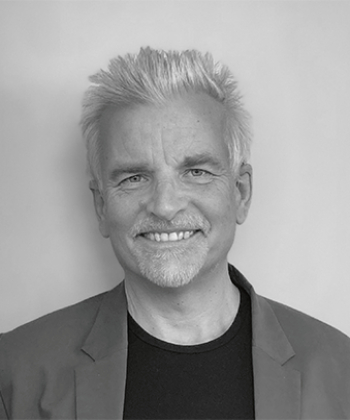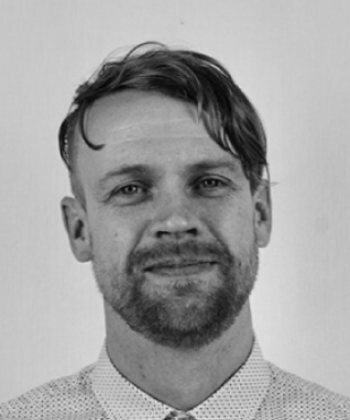Agent Based Modeling of Social Interaction to Support Community Resilience
This webinar is part of the RAIC 2022 Virtual Conference on Architecture, now available to stream!
Topics: Urbanism
Length: 1 hour | What's Included: Video, Quiz, and Certificate of Completion
We’re in the midst of a loneliness and isolation epidemic. But research shows that regardless of whether someone identifies as an introvert or extrovert, they still feel better with more social interaction (Sandstrom & Dunn, 2014, PSPB; Epley & Schroeder, 2014, Journal of Experimental Psychology). “Remarkably, interactions with strangers and weak ties correlated at least as highly with happiness as interactions with strong ties. Taken together, our studies on this topic point to the conclusion that even seemingly trivial social interactions may be important for happiness.” (Sandstrom & Dunn, 2014, PSPB) Social connectivity is a central tool for increasing societal resilience. One of the best predictors of resilience after a natural disaster is whether people know their neighbours. (Sadri. et al. 2018). Successfully responding to challenges such as economic inequality, climate change, and global pandemics will be more likely in socially-connected communities. This is becoming increasingly important, as we see a rise in extreme weather events as a consequence of climate change. The pandemic also amplified the gaps in our social fabric and how vital it has been to have connected and resilient communities to get through COVID-19.
Architects intuitively know that some buildings will better enable social interactions. But until now, there hasn’t been an evidence-based tool available to demonstrate how building design impacts social isolation in the places we live and work. Human Studio recently developed a tool, FLUID Sociability, that uses video game technology to simulate the behaviour of “agents” in buildings and then measures the number of social interactions between “agents.” By running this simulation in different building designs, we can see which one has higher community interaction and, therefore, social connection. Gathering evidence that shows how design impacts social interaction will enable us to build better buildings and positively impact the health, wellbeing, and resilience of the communities that we live in.
Learning Objectives:
- By the completion of this session, participants will be able to:
- Describe how sociability impacts community and individual health, and how the design of the built environment plays a role in social isolation/ connection in our communities.
- Summarize the different stages of social interactions: Encounters, Greetings, and Conversations.
- Explain how agent-based modelling functions.
- Describe how to run a sociability analysis on your project.
Subject Matter Expert:
 |
Bruce is passionate about human engagement as a central objective of design, both for social health and for fostering creative entrepreneurialism. He is currently leading the enhancement and validation of the FLUID Sociability software tool. This work is at the core of Human Studio’s work on enhancing sociability through evidence-based design. While the FLUID software tool focuses on building design, Bruce is also co - author of the book “Urban Magnets” - How Activity Subcultures can be a Catalyst for Rejuvenating Cities. The focus of this work is that visible human passionate activity can be a catalyst for urban vitality. Both FLUID sociability and Urban Magnets are expressions of Bruce’s curiosity about the link between human connection and the built environment.
Prior to founding Human Studio with Peter Atkinson, Bruce was a Principal at Dialog’s Vancouver Studio (Formerly Hotson Bakker Boniface Haden). Bruce has been a leader on multiple widely recognized projects, including the globally published and awarded Nk’Mip Desert Cultural Centre, the LEED Platinum UBC Student Nest Building (with B+H), and the Vancouver House tower (with the Bjarke Ingels Group). He is the Jury Chair for the international design competition for the Block 2 site on Parliament Hill in Ottawa. He is a founding board member of Urbanarium, and he has twice chaired the City of Vancouver Urban Design Panel. He helped to set up both Waterfront Toronto and the City of Toronto’s Design Review Panels. Bruce taught at the UBC School of Architecture and was the Vancouver correspondent to Canadian Architect Magazine for ten years. In addition, Bruce was the Design Correspondent for CBC Radio’s Early Edition for two years, and had a regular design spot on Roundhouse Radio in 2016 through 2017. He was a member of Vancouver Foundation’s Four Pillars Fund and is the past Chair of the Board of Directors of the Contemporary Art Gallery in Vancouver. Bruce’s extensive publishing, broadcasting, teaching, advocacy and exhibition work expresses a core belief in human engagement as the central objective of good design. In so doing, his work brings together architecture and the humans that live, work, learn and play within it.
|
 |
Peter is a Principal at Human Studio Architecture and Urban Design. Prior to Human Studio he was an associate at Dialog where he spent the previous twelve years between their Calgary and Vancouver offices. At Human Studio, Peter is focusing on the use of mass timber as a responsible carbon and renewable building material alternative to traditional structural systems. He is also currently working on advancing the use of prefabrication as a method to reduce on-site construction time while using detailed virtual construction modelling to reduce the amount of on-site conflicts.
Peter is passionate about using built form to create connective urban environments that benefit our collective wellbeing, both locally, and at the global climate impact level. and exhibition work expresses a core belief in human engagement as the central objective of good design. In so doing, his work bridges the disconnect between architecture and the humans that live, work, learn and play within it.
|
Pricing A-La-Carte
Member: $50 / Non-Member: $75
Intern Member: $35 / Intern Non-Member: $50
Student: $25 (must be an RAIC student associate member)
This is a recording of a live event.
This webinar is part of a series! See more like this here.




